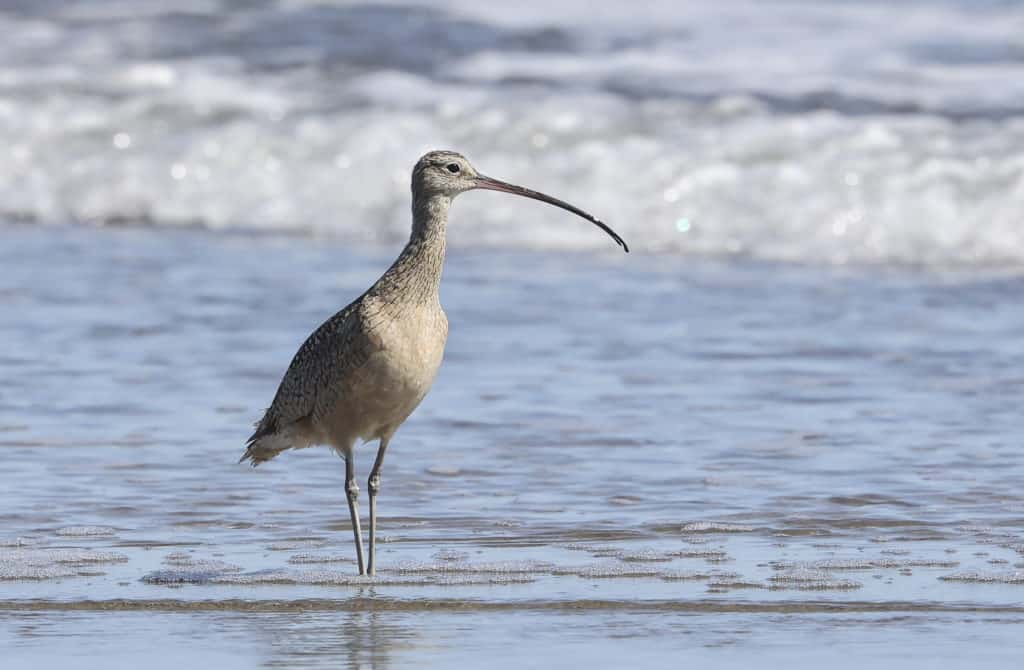Creature Feature

Long-billed Curlew
By Wayne Bierbaum
North America’s largest sandpiper, the curlew, is a rare visitor to Maryland’s coast and the Chesapeake Bay. The long-billed curlew absolutely has a very, very long bill. The tip of the bill is flexible and has sensory receptors that detect taste and pressure. They can locate sand crabs and worms in the sand and mud along the shore. During breeding season, they move inland and their flexible bill is used to catch grasshoppers and other grassland insects.
Many shore birds have strange names like godwit, whimbrel and curlew. I could not find a good source for the origin of the name curlew but it has been suggested that the bird’s call sounds like its name. The birds look similar despite age and sex; the adult female may be larger with a longer bill.
The usual migratory path for the curlew is from wintering in Central America to breeding areas in the western U.S. prairies. In spring, the majority of the birds cross the Gulf of Mexico and fly north from Texas. A few will fly up the Pacific coast and cross the Cascades or Rocky Mountains to get to the breeding grounds. They tend to have two chicks per breeding season and there is considerable parental guarding, to the point that they usually fly south in the fall as a parental group.
Strong spring storms will occasionally push migrating birds to the east and they will create quite a stir among the bird watchers when they show up around our shores. I have never seen one in Maryland but have seen them in Texas, northern Florida and recently in northern California. This last sighting was last week.
I was watching ospreys catch striped bass in the surf at Point Reyes National Seashore when a large brown bird flew in front of me and landed. At first glance, I thought it was an immature gull but the long bill gave it away. I was doubly surprised because I didn’t know that there were striped bass in California and then I was told that curlews were uncommon that far north. The bird was by itself and nervous. I took a long-distance photo and walked away to let it rest.
The long-billed curlew has had a sharp drop in its numbers largely due to human development along its migration route and breeding area. Drought and water usage has reduced where it can forage as it moves to the prairies. Farmers along the migration route have been requested to leave water in depressions to help migratory birds.
Hopefully, this strange looking bird will not disappear like the Eskimo curlew, which was once the most common shorebird on the west coast but has not been seen in almost 40 years since, like the passenger pigeon, it was hunted to extinction.
